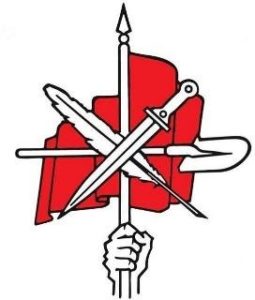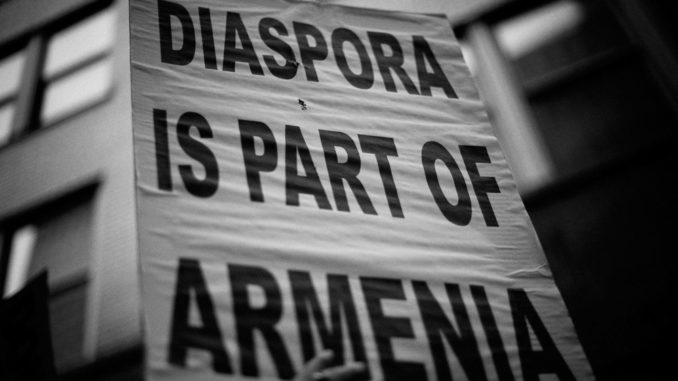

Smart' pistols – designed to restrict who can fire them – are poised to hit the booming US market this year, taking aim at spiking gun deaths as national lawmakers remain deadlocked on firearms restrictions (AFP/Ginger CHANDLER)
Joshua MELVIN
Fri, January 14, 2022, 6:23 PM·4 min read
"Smart" pistols designed to limit who can shoot them are poised to hit the booming US firearm market this year, taking aim at spiking gun deaths as federal lawmakers remain deadlocked on any new restrictions.
Questions over reliability and political fights have bedeviled the technology for decades, but backers say it's a chance to prevent children, criminals or people considering self-harm from pulling the trigger.
Yet whether the deadly weapons will be embraced by buyers, perform as intended in real-life, or deliver on their pledge to increase gun safety are questions that could be years from a definitive answer.
"I don't have a crystal ball to know whether it's going to be good on balance, bad on balance or ultimately like other smart guns in the past -- kind of a dud," said Adam Skaggs, chief counsel and policy director at gun control advocacy group Giffords.
The system from entrepreneur Tom Holland's company SmartGunz uses RFID chips -- similar to the emitters many people use in their car to pay tolls -- installed inside rings.
When shooters grip the gun with the hand wearing the special ring, a safety mechanism unlocks, allowing the gun to fire.
Holland sees applications in protecting police officers who could have their pistol wrestled away by a suspect; or parents worried their kids could find their firearm.
"This is only about gun safety," he told AFP. "For those consumers that want a 'safer gun'...they can have access to this if they feel they have the need for lethal protection on their property."
He expects his pistol, which he said is being tested by some police in the United States, to begin selling to civilians by April or May.
- A gun-owning society -
Any sales would arrive in an unprecedented context in the United States, where some 40 percent of adult Americans live in a gun-owning household, according to the Pew Research Center.
Firearms sales set a record in 2020, with nearly 23 million sold, according to the Small Arms Analytics & Forecasting consultancy.
Following racial justice protests and the onset of the the pandemic, the United States saw in 2020 its biggest rise in homicides since national records began in 1960 –- though overall levels of killing remained below the 1990s.
The recurrent horror of America's mass shootings provoke intense bursts of attention, but over half the roughly 40,000 annual firearms deaths are suicides.
Ginger Chandler, the co-founder of smart gun maker LodeStar Works, said the user authentication steps are a physical buffer against accidents, suicides and crimes -- and a psychological barrier.
"In times of stress, somebody who is authorized is going to pick up the firearm but they have to do that (extra) step," she said. "Maybe it makes them pause and go 'Hey, do I really want to be doing this right now?'"
The 9 mm pistol her firm is developing, which it plans to have on the market by 2023, can unlock in three ways: fingerprint sensor, smartphone app or a keypad to enter a code.
- Gun rights lobby -
These new entrants arrive after years of turbulence for "smart" weapons.
US firearms maker Smith & Wesson agreed with then president Bill Clinton's administration in 2000 to make gun violence-reduction reforms that included developing smart guns, but the deal withered under a backlash from America's powerful gun rights lobby.
A 2002 New Jersey state law that would have banned pistols without user-authentication technology sparked a furore –- and was recast in 2019 to require state firearms shops to sell smart guns once they become commercially available.
Then came the case of the smart pistol developed by the German company Armatix – which was derided after a hacker showed in 2017 the safety technology could be defeated with magnets.
Also, while the smart gun concept has received support from gun control advocates, some experts point out that it's still a deadly weapon.
"The whole smart gun argument ignores the most common way guns are used to kill in the US – suicide by the person who bought the gun," Daniel Webster, director of the Johns Hopkins Center for Gun Policy and Research, told AFP in a statement.
Yet the technology has an appeal especially as political polarization appears to guarantee no new federal restrictions on guns in the near future.
LodeStar co-founder Gareth Glaser said the company has tried to stay out of the politics of gun rights, and their product seeks to avoid that debate too.
"It's a workaround," he said. "We would really rather the government stay out of it and allow the consumer to make the choice."
jm/des/bgs
John Gear
Fri, January 14, 2022
We can fix the gun problem and make America safer without an expensive, dangerous, and futile “War on Guns.”
To solve the problem of keeping guns out of the wrong hands we must use an idea that limits losses from many other hazards: insurance.
Mandatory insurance makes people be responsible for choices that impose risks on others. We must require gun owners at any instant (maker, seller or buyer) have liability insurance to cover any harms that weapon causes.
Insurance payouts would go to the crime victims' compensation fund, whenever a crime involving guns is committed or a gun mishap occurs. The more victims, the bigger the payout. The greater the damage (from intimidation to multiple murders and permanent crippling), the greater the payout.
Insurers will also pay for other claims, such as when a minor commits suicide or kills a playmate with an unsecured weapon.
Another view: Too many kids lost to gun violence, and for too many years
Insurance is very effective in getting people to adopt safe practices in return for lower premiums. And when gun crimes occur, the firm insuring it pays the claim. If no gun is found or the gun is uninsured, every fund will pay a pro-rated share of the claims based on how many guns they insure.
This will motivate insurers and responsible gun owners to treat uninsured guns as poison rather than an unavoidable result of the Second Amendment. Mandatory insurance will re-unite everyone’s interest in fighting the real problem with guns: guns in the hands of criminals, the reckless, the untrained, and juveniles.
The insurance will be from a private firm, not the government. Each insurer will seek to earn more premiums with fewer claims.
Guns aren't the problem: People like Rep. Lauren Boebert and the NRA are
So gun owners will ultimately choose the controls we will tolerate and the corresponding premiums. Rates will vary according to the gun we want to insure, our expertise, and claims history.
Newer, younger shooters and those who choose weapons that cause more claims will pay higher premiums so other owners, and with more training and claims-free history, will pay less.
Soon, the firms will emphasize cutting claims by promoting gun safety and fighting black market gun dealers, which is where many criminals get guns. And every legitimate gun owner will have a persuasive reason -- lower premiums -- to help in the fight.
Gun-control advocates will hate this because it forsakes the failed prohibitionist approach. But the evidence is clear: There is a way to prohibit guns without destroying our civil liberties. The organized gun lobby will hate it too because its power comes from sowing fear of gun prohibition.
This won't work instantly, but it will work because it breaks the deadlock about guns and how to keep them away from the wrong people, without denying anyone’s rights. It will end the lethal political deadlock over guns.

John Gear
It's time for everyone, people who own and people who don’t, to work together to fight firearms in the wrong hands by fighting fire with FIRE: Firearm Insurance, Required Everywhere.
John Gear is an attorney in private practice in Salem. He first wrote about his proposal for mandatory insurance for guns in 1999. You may reach him at gearjm@gmail.com
This article originally appeared on Salem Statesman Journal: Gun safety through mandatory arms insurance

Nicole Goodkind
Thu, January 13, 2022
The Transportation Security Administration confiscated 5,700 guns last year, the most in the agency's 20-year history. And many of those firearms were loaded.
"The reason, I think, is just that there's more firearms carriers in the country," TSA Administrator David Pekoske said at a press conference this week. "Generally, what we see in our checkpoints, in terms of what people carry, that reflects what's going on in the country."
The previous record for firearms confiscated by the TSA was 4,432 in 2019. Meanwhile, the rate of TSA detecting firearms doubled to 11 per million passengers in 2021, from five in 2019.
Carrying firearms or ammunition in carry-on luggage through airport security checkpoints is banned, though TSA regulations allow unloaded firearms in checked baggage.
Gun purchases accelerated dramatically during the pandemic, with more than 5 million adults becoming first-time gun owners from January 2020 to April 2021. That was more than double the 2.4 million adults who first purchased guns in all of 2019, according to a recent study on gun ownership.
More than 11 million people, including 5 million children, were newly exposed to weapons because of the increase in purchases, according to a study by Matt Miller, a professor of health sciences and epidemiology at Northeastern University.
“In going from zero guns to one gun, the risk of dying a violent death increases dramatically—not just for the gun owner, but also for the other people in the household as well,” says Miller, who published the study with Deborah Azrael of the Harvard Injury Control Research Center.
Highlighting the gun problem in airports was an incident during the busy Thanksgiving season in November, when a gun was accidentally discharged at the Hartsfield-Jackson Atlanta International Airport. Three travelers sustained non-life-threatening injuries during the chaos and panic that ensued. "We've had many more incidents where there are passenger disturbances both in checkpoints and onboard aircraft. That makes it more important that there are no guns involved," Pekoske said in an interview, referring to interactions between airline officials and passengers who refuse to comply with COVID-19 mask regulations.
Shannon Watts, founder of Moms Demand Action, which fights for public safety measures to prevent gun violence, told Fortune, “The record number of firearms being recovered at airports across the country is the logical outcome of the NRA’s dangerous agenda to allow guns for anyone, anywhere, any time—no questions asked.”
The federal background check system for all gun buyers became overwhelmed during the pandemic, with 43% more checks being processed between March and November 2020 compared to the same period in 2019, according to Everytown for Gun Safety, a nonprofit group that advocates for gun control.
If background checks, processed by the FBI, take longer than three business days, sales may proceed without them, in what’s known as the Charleston loophole. While data is not yet available for 2021, the FBI never finished over 316,000 background checks during the first nine months of 2020 alone, more than in any other year on record. Those numbers don’t include data for October, November, and December, which are typically the busiest months for gun purchases.
“Where guns are, gun violence follows—whether it’s unintentional discharges, like in the Atlanta airport, or tense situations that turn deadly, like the surge in road rage shootings and gun violence at sporting events,” Watts told Fortune. “If more guns and fewer gun laws made us safer, America would be the safest country in the world. Instead, lax gun laws have led to us having the highest level of gun violence among all peer nations.”
The gun homicide rate in the U.S. is 25 times higher than that of other developed countries.
This story was originally featured on Fortune.com




 «Կ՛երդնում պատուոյս եւ Հայրենիքիս վրայ՝ միշտ հաւատարիմ մնալ Հայ Յեղափոխական Դաշնակցութեան Ծրագրին, Կանոնագրին ու որոշումներուն եւ բոլոր ուժերովս – իսկ եթէ հարկ ըլլայ՝ նաեւ կեանքիս գնով – ծառայել Հայաստանի եւ Հայութեան ազատագրութեան դատին:» Translated into English it states, I swear on my honor and my homeland to forever remain faithful to the program, Bylaws and decisions of the Armenian Revolutionary Federation (ARF), and with all my might, and if necessary with my life, serve the cause to liberate Armenia and the Armenian people.
«Կ՛երդնում պատուոյս եւ Հայրենիքիս վրայ՝ միշտ հաւատարիմ մնալ Հայ Յեղափոխական Դաշնակցութեան Ծրագրին, Կանոնագրին ու որոշումներուն եւ բոլոր ուժերովս – իսկ եթէ հարկ ըլլայ՝ նաեւ կեանքիս գնով – ծառայել Հայաստանի եւ Հայութեան ազատագրութեան դատին:» Translated into English it states, I swear on my honor and my homeland to forever remain faithful to the program, Bylaws and decisions of the Armenian Revolutionary Federation (ARF), and with all my might, and if necessary with my life, serve the cause to liberate Armenia and the Armenian people.


